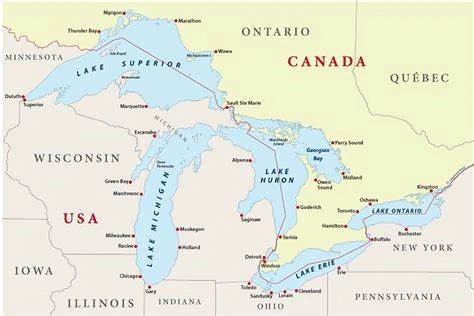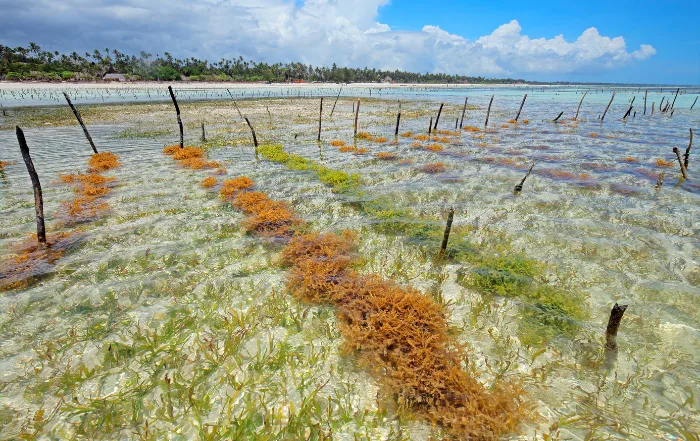The quest to combat global warming and reduce carbon dioxide emissions has led to increased interest in seaweed farming as a potential solution.
Seaweed has the remarkable ability to absorb carbon dioxide from the atmosphere and store it deep in the ocean, making it an attractive option for carbon capture.
However, a recent study published in Nature Communications Earth & Environment reveals that scaling up seaweed farming to meet climate change goals may not be as feasible as initially hoped.
The Enormous Space Requirement Is Simply Unfeasible
To put things into perspective, the study estimates that approximately one million square kilometers of ocean would need to be dedicated to seaweed farming in order to remove a billion tons of carbon dioxide from the atmosphere annually.
This massive space requirement poses a significant challenge, considering the competing uses of coastal areas for shipping, fishing, and other activities.
Meeting the ambitious climate goals of capturing between 2.5 and 13 billion tons of atmospheric carbon dioxide each year seems increasingly difficult, even with seaweed farming as a strategy.

Picture This...
The Great Lakes x 4
The surface area of all the Great Lakes combined is 246,463 square kilometers. The equivalent of 1 million square kilometers of ocean would require over four times the current size of all the Great Lakes. Imagine that, multiply the Great Lakes by four, and you’re almost there (not quite).
The Urgency of Carbon Dioxide Removal
Scientists have emphasized the critical need to remove substantial amounts of carbon dioxide from the atmosphere to mitigate the worst impacts of global warming.
The study’s authors note that in addition to significant reductions in greenhouse gas emissions, capturing anywhere from 1.3 billion to 29 billion tons of carbon dioxide annually is necessary to prevent global warming levels from exceeding 1.5˚C.
The United Nations estimates that a staggering 10 billion tons per year would need to be removed to limit warming to 2˚C by 2050.
The Limitations of Seaweed Farming
Seaweed farming offers hope due to its ability to absorb carbon dioxide through photosynthesis and sequester it when the plant matter sinks into the ocean.
However, the study’s lead researcher, Isabella Arzeno-Soltero from Stanford University, warns that the industry may be ahead of the science.
The research team used a sophisticated software model that considered factors such as nitrate uptake, water temperature, sun intensity, and wave height to estimate seaweed growth potential.
The simulations suggested that even under optimal conditions, seaweed farming falls short of meeting the scale required for carbon capture.
Challenges and Considerations You Should Know
Expanding seaweed farming projects raises concerns about potential impacts on ocean ecosystems.
Agnes Mols-Mortensen, a seaweed farmer from the Faroe Islands, emphasizes the need for caution to prevent overexploitation of the ocean. It is vital to conduct thorough research and develop sustainable methods before relying solely on seaweed as a solution to save the planet.
While seaweed farming remains an intriguing avenue for carbon dioxide capture, there is a need to temper expectations and explore a diverse range of strategies to combat climate change effectively.
Seaweed farming’s potential for carbon dioxide capture faces substantial challenges in scaling up to meet climate change goals.
More To Discover
- Cryptocurrency and the Environment: In-Depth Study Examines The Hidden Costs of a Digital Gold Rush
- Enviva’s Wood Pellet Plant in Georgia, the World’s Largest, Is Exceeding Pollution Limits According To State
- Bottled Water Industry Responds to Columbia University Study on Nanoplastics & They’re Not Wrong
- 9 Trailblazers of Mycelium-Based Meats: 8 Young Fungi Brands You Can Eat Right Now And Their Godfather
The study’s findings suggest that the industry’s current capacity falls short of the enormous space requirements involved.
While seaweed farming can play a part in carbon capture efforts, it cannot be the sole solution.
Balancing the need for effective climate mitigation strategies with the preservation of ocean ecosystems requires a comprehensive and cautious approach.
It’s essential to continue exploring and investing in diverse strategies to combat global warming and ensure a sustainable future for our planet.





















